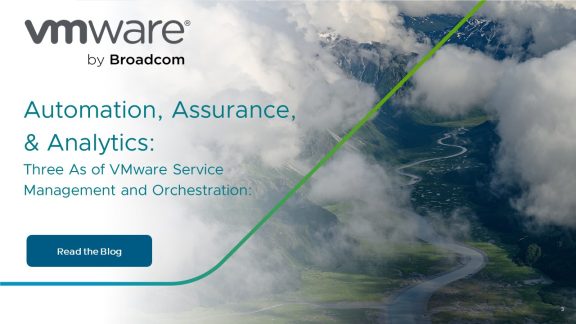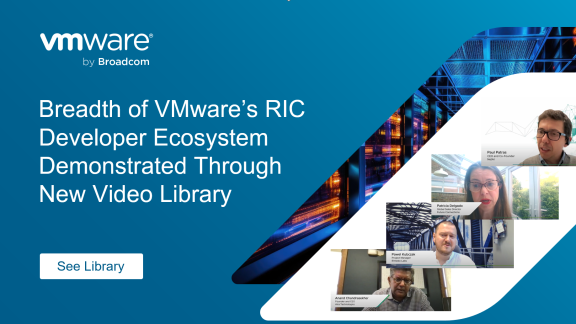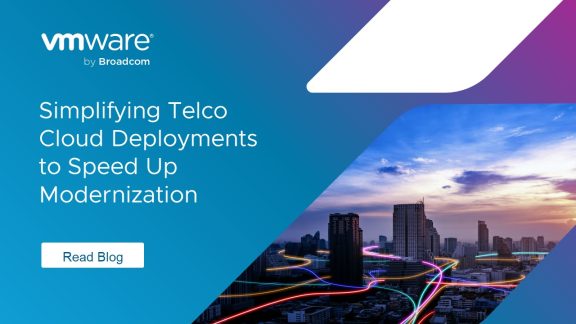The O-RAN Alliance aims to create an open, multi-vendor RAN ecosystem by disaggregating the radio access network and breaking up the monolithic legacy RAN architectures dominated by a small number of suppliers. In doing so, they hope to increase competition among vendors and thereby reduce operational costs for CSPs, as well as speeding up the pace of innovation. Such a disaggregated network clearly requires a unified management layer, and in the O-RAN architecture this role is provided by the Service Management and Orchestration framework, or SMO.
The O-RAN Alliance, however, has broader aims than just opening up the network for new vendors. It also defines a fully cloud-based architecture for building the RAN, and this brings with it a new way of designing, deploying, operating and maintaining the network in a cloud-native fashion.
This is where the real power of the SMO lies: It doesn’t simply manage a multi-vendor network. It brings modern, cloud-native technology to the RAN to speed up deployments, increase flexibility, and tailor customer experiences in a dynamic, multi-cloud environment.
As an industry leader in virtualization and cloud-native technologies, VMware by Broadcom is, as a RAN-neutral vendor, a clear choice for CSPs seeking an SMO solution to oversee their multi-vendor cloud-based networks. The VMware Service Management and Orchestration framework encompasses three main pillars, and we will be demonstrating use cases showing these pillars in action at MWC Barcelona 2024:
- Automation and Orchestration
- Assurance and Observability
- Analytics and Optimization
The VMware Service Management and Orchestration (SMO) framework seamlessly integrates open interfaces, cloud-native technologies, and a modular service-based architecture. At the solution’s core lies a commitment to extensibility and facilitating compatibility with any vendor, application, or cloud infrastructure.
Automation and Orchestration
VMware SMO serves as the central hub for administrators and user interactions providing centralized management services for the RAN infrastructure (telco clouds) and workloads (network functions and rApps). The automation and orchestration service plays a pivotal role in monetizing 5G, reducing OpEx, dynamically allocating resources, optimizing networks, and resolving issues in near real-time to enhance efficiency and customer experience.
Assurance and Observability
VMware SMO delivers RAN observability and assurance by monitoring RAN resources and functions from a centralized location. The observability and assurance service leverages machine learning to automatically find and fix network and service issues. Once the root cause is identified, the system can trigger a series of actions, from identifying business impacts to initiating closed-loop remediation.
Analytics and Optimization
The analytics and optimization service of VMware SMO is an implementation of the non-real-time RIC as defined in the O-RAN alliance reference architecture. The service enhances resource management and customer experience via data-driven network optimization delivered through multi-vendor rApps. The service supports policy-based guidance, data analytics, AI/ML model management, and enrichment information for RAN elements. It uses southbound O1 and A1 interfaces, as well as legacy (non-standard) interfaces of the RAN vendors, to manage the RAN data plane and the RAN control. Open northbound APIs and a comprehensive software development kit (SDK) accelerates rApp development, enhances application portability, and reinforces security.
MWC Demos Showcasing VMware SMO
At MWC Barcelona 2024, VMware is demonstrating four use cases that highlight the power of VMware SMO to modernize your RAN operations, enhance observability, and optimize the RAN faster:
- End-to-End Observability: With the increasing shift toward cloud-native networks, the demand for visibility across various layers has grown significantly. This demo shows how the unified user interface of VMware SMO supplies a centralized view of alerts, health metrics, scheduled upgrades, RAN KPIs, and topologies. VMware SMO also provides multi-layer KPI observability facilitated by an AI/ML engine so that engineers can correlate RAN KPI degradation with wireless or cloud factors. The trained set of remediation actions included with VMware SMO gives engineers end-to-end observability, correlation, and closed-loop remediation.
- Modernizing Legacy RAN Management: This demo showcases how the centralized data collection capabilities of VMware SMO enable you to monitor O-RAN and legacy RAN interfaces, including the O1 and O2 interfaces. The collectors also support FCAPS monitoring of legacy and new RAN network elements.
- AI-Driven Network and Service Optimization: With the surge in consumer and enterprise applications and advanced use cases, the need for comprehensive visibility into their impact on the network has never been more apparent, and this demo illustrates that comprehensive visibility. VMware SMO addresses the need for comprehensive visibility by interfacing not only with the RAN but also with the core network using APIs. The cross-domain analytics of VMware SMO can interface directly with NWDAF, ingesting data for further analysis, or it can ingest data from the core network using APIs to perform the correlations with AI/ML workflows. This flexibility simplifies the overall architecture, significantly reducing data ingestion and analytics components.
- Distributed Far-Edge Cell Site Rollout: To tackle the challenge of slow and error-prone manual cell site deployments, a highly automated workflow has been implemented by VMware SMO. The workflow, driven from an integrated pipeline engine, automatically discovers new infrastructure, bootstraps the host to install the operating system, configures the BIOS, updates the firmware, provisions, and protects the infrastructure at a cell site, deploys the Kubernetes clusters, and instantiates and configures the RAN distributed unit (DU) to the point of a broadcasting cell site.
This automated workflow significantly reduces deployment time, allowing our customers to roll out and expand their networks faster than ever. The system delivers comprehensive insights into the deployment health of RAN Distributed Unit (DU) and Centralized Unit (CU) sites.
To see these use cases in action, visit us at MWC Barcelona in Hall 3, Stand 3M11. Book your demonstration today at https://www.vmware.com/content/microsites/learn/en/428006_REG.html








